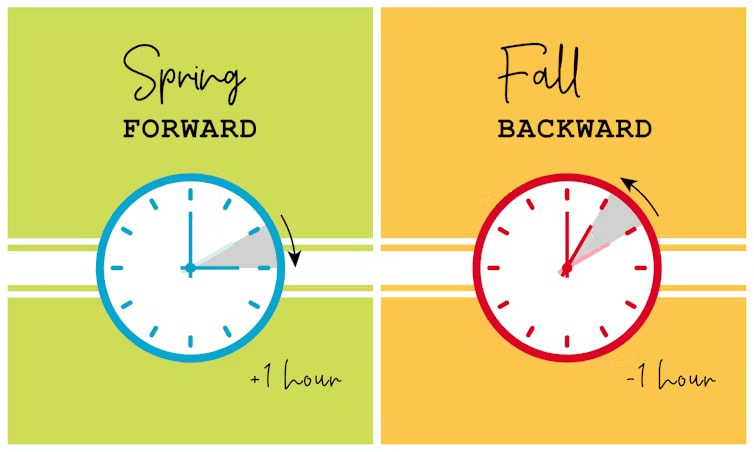|
Image c/o Getty Images By Isabella Wynn Visiting Columnist In adjusting to losing an hour of sleep on March 10th, we may be enjoying more daylight, but our internal clocks are not having as good of a time. Daylight savings time (DST) has become something most people in the U.S. have grown accustomed to. With the exception of Arizona and Hawaii, the U.S. is a part of the 70 countries that observe DST. Most Californians may be aware that absolving daylight savings has been on the ballots for years. I am personally on the side that believes we should join Arizona and Hawaii in not participating in daylight savings, and I’ll tell you why.
You may be familiar with the term “Circadian Rhythm.” Our circadian rhythms become wildly affected when DST begins or ends. The National Institute of General Medicinal Sciences (NIGMS) states that “circadian rhythms are the physical, mental, and behavioral changes an organism experiences over a 24-hour cycle.” While our circadian rhythms can be affected by things like food intake, social environments, and temperature, light and dark have the biggest influence. Light and dark does not only refer to the daylight or lackthereof outside, our circadian rhythms can also be affected by things like the light from our technological devices or the use of blackout curtains. I’m no woman in STEM, but I generally understand our circadian rhythms and how important it is to try to keep them regularly controlled. With so many aspects of our daily lives that could disrupt our rhythm, adding DST into the mix can cause not only short term risks but long term risks. Our social jet lag and sleep deprivation caused by DST can “result in a continued misalignment in your body's internal clock” (Business Insider) which is linked to causing serious problems. Short-term problems such as an increase in car accidents and workplace injuries are accompanied by “24% more people [having] heart attacks than on other Mondays throughout the year” (Business Insider) when DST begins. DST is also linked to an increase in poor mental health and suicide. In terms of long-term risks, we already have a society that has become addicted to our technology and microplastics in our food and water; if we have the opportunity to eliminate something that causes problems, we should take it. The NIGMS stresses that “long-term sleep loss and continually shifting circadian rhythms can increase the risks of obesity, diabetes, mood disorders, heart and blood pressure problems, and cancer, and can also worsen existing health issues.” DST was first temporarily implemented during World War I in efforts to save energy. Nowadays, DST does the opposite. It has been found that DST causes us to consume more energy than we conserve. DST also increases the “demand for heat and air conditioning.” And perhaps part of the reason the government hasn’t put an emphasis on the importance of abolishing DST is that we are more likely to spend more money after work in the spring and summer due to extra daylight. Don’t get me wrong, I love the switch when daylight savings ends and we get more sunlight later in the day. However, I do not love the process of resetting my internal clock. In wanting to get up early and have a productive start to my day, I find myself hitting snooze for an hour. I used to think Arizona and Hawaii were strange for not joining the rest of the states in observing DST. However, in learning about these major risks and acknowledging how I am personally affected by it, I found myself on the side of agreeing with the abolishing of daylight savings. Hopefully in reading this, you may reconsider how you feel about DST. Even if it means I’ll be spending more money later in the day, I’d love to have more sunlight later in the day year round. And, more importantly, I’d love for my circadian rhythm to not be extra affected twice a year.
0 Comments
Leave a Reply. |
STAFFMadison Sciba '24, Archives
October 2023
Categories |


 RSS Feed
RSS Feed